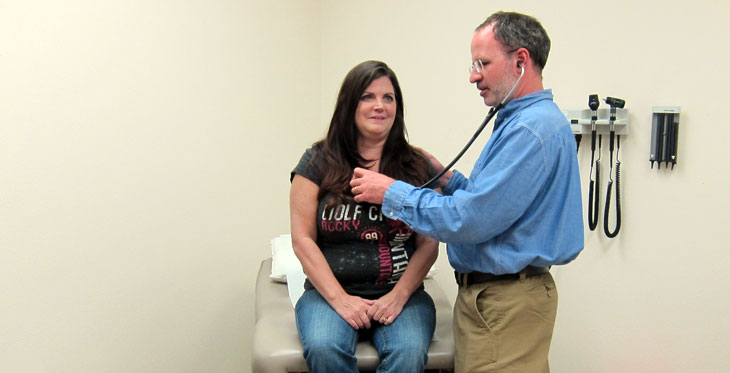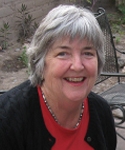Steve McCrosky was 16 when the Centers for Disease Control and Prevention issued its first report of men dying from diseases that very few people had ever heard of. He graduated from high school in 1983, when the collection of illnesses had been named human immunodeficiency virus, or HIV – the cause of acquired immune deficiency syndrome, also known as AIDS.
McCrosky was captivated by the medical and social implications of the growing epidemic. After high school, he enrolled at Northeastern University in Boston, where he received his nursing degree. In 1994, he headed west to San Francisco where he witnessed the AIDS epidemic up close. He realized then that he wanted to be on the front lines of this unprecedented pandemic. In 2001, at the University of California, San Francisco, he completed training to be a family nurse practitioner.
A few years ago, McCrosky was living in Flagstaff and practicing family medicine in Winslow, Arizona, which borders on the Hopi and Navajo reservations. He asked his employer, North Country HealthCare – a federally qualified community health center with clinics in Flagstaff and 13 other communities – if he could develop a program specifically for patients with HIV and AIDS. He wanted to divide his practice between telemedicine and in-person patient visits. North Country readily agreed.
His practice is now devoted to about 200 patients with HIV and AIDS. About half his time is spent seeing patients either in North Country’s Flagstaff clinic or through its telemedicine connection. The other half of his time, he’s traveling to one or more of the North Country clinics located within the 60,000 square miles that make up northern Arizona – to places like Bullhead City on the western edge of Arizona and Show Low, 100 miles this side of New Mexico.
Every Wednesday, he drives south to Prescott, where he is medical director for Northland Cares, a non-profit HIV-AIDS support organization.
“I couldn’t do this without telemedicine,” McCrosky says.
Nor could his patients. Christopher Estudillo, a member of the Laguna tribe of western New Mexico, lives in Winslow. He walks six blocks from his house to the Winslow clinic, where he can have a virtual visit with McCrosky, or a face-to-face visit on the two days a year McCrosky visits the clinic. Estudillo’s other option is driving 60 miles to Flagstaff.
Another of McCrosky’s patients, who wants to be anonymous, was infected with HIV from a transfusion almost 30 years ago.
“Yes, it (telemedicine) did feel weird at first, like talking to a TV,” she says. “But it works. You get used to it. And it’s good for Steve to not have to drive all the way over here. I think telemedicine will become even more popular that it is now. I think it’s the wave of the future.”
She sees McCrosky every three months, more often if needed, either by telemedicine or in person at the North Country clinic in her hometown She says two things keep going: her strong faith, and Steve McCrosky.
“Steve is very upbeat,” she says. “He always has good things to say to me. He brings out the good in me.”
Steve McCrosky is a family nurse practitioner with 200 patients scattered across more than 60,000 square miles in northern Arizona. Through his employer, North Country HealthCare, he created a program for patients with HIV and AIDS. And because North Country is a site on the Arizona Telemedicine Program network, McCrosky can see patients via telemedicine or face to face, as often as they need to see him.

